Wakefield prison's 'Mulberry Bush' tree cut down
- Published

The mulberry tree features on the crest of HMP Wakefield, with a nearby road named Mulberry Way
A 19th Century tree thought to have inspired a well-known nursery rhyme has been removed from the grounds of one of Britain's most notorious jails.
HMP Wakefield's mulberry died in 2017 - a year after it was shortlisted as a Tree of the Year contender.
The tree, considered by some to be the origin of Here We Go Round the Mulberry Bush, was cut down on Tuesday.
But it is set to be replaced after a staff appeal tracked down a cutting taken from the original 30 years ago.
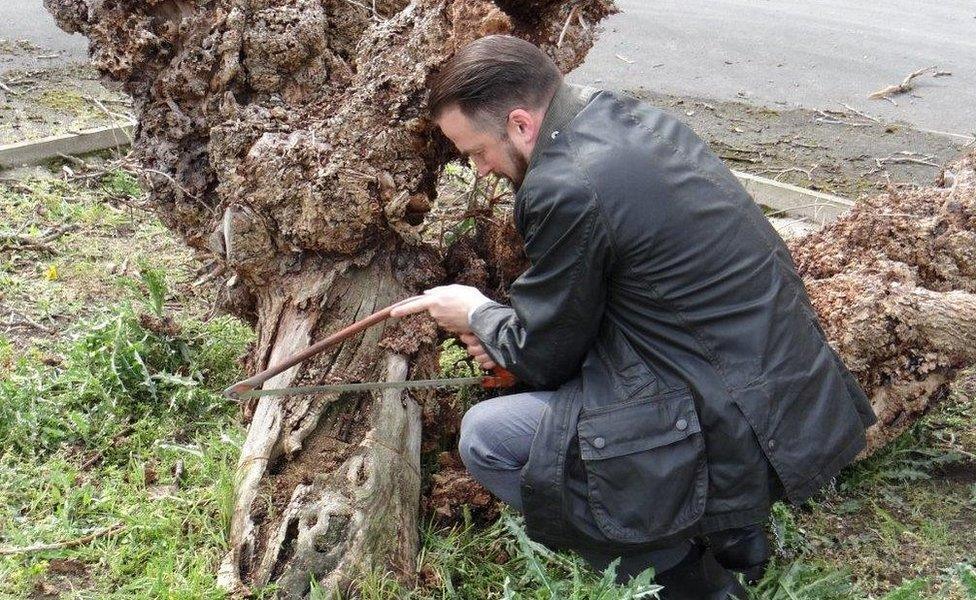
Prison staff at HMP Wakefield helped to fell the dead mulberry tree on Tuesday
Its replacement was grown in the 1980s in the garden of a retired member of staff, who has since died.
His widow was made aware of the appeal for tree cuttings and was "delighted to assist with this project", the prison said.
The original mulberry died through beetle infestation and canker, a Prison Service horticulturalist found.

Excerpt from Here We Go Round the Mulberry Bush
Here we go round the mulberry bush
The mulberry bush
The mulberry bush
Here we go round the mulberry bush
On a cold and frosty morning.

Prison officer Simon Richardson, who helped to remove the dead tree, said: "It became a project because [the mulberry] is so important to Wakefield prison, it's instrumental in the place, everything revolves around it.
"Unfortunately it's dead, but the aim is to replace it - we'll have one here where the original was and possibly another one at the other end of the jail so everyone can see it."
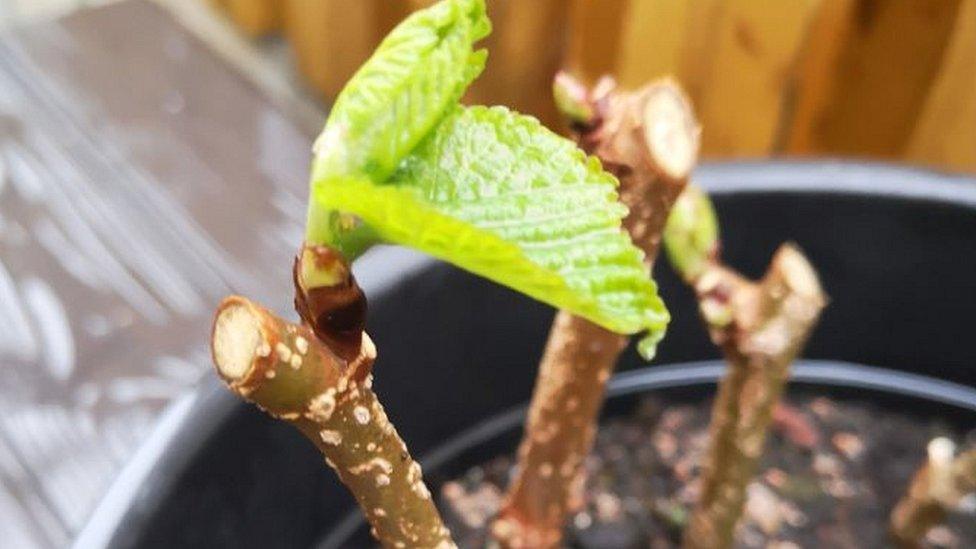
A new mulberry grown from cuttings taken from a former prison staff member's garden will replace the dead tree
Cuttings were taken from the 30-year-old mulberry and attempts are being made to propagate a new tree.
He added: "I was very apprehensive coming to work this morning because it's part of history and the jail, it's something to be proud of."

From crimes to rhymes
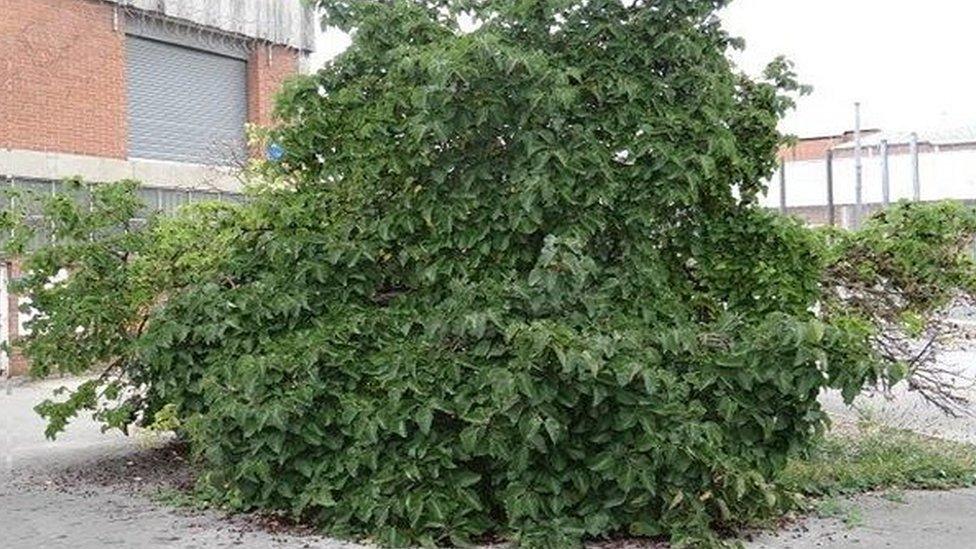
HMP Wakefield was originally built as a house of correction in 1594
In later centuries female prisoners were said to have danced around the tree and it is locally believed the women invented the nursery rhyme to keep their children amused
Another possible interpretation is that "cold and frosty" Britain struggles to produce silk, with mulberry trees a key habitat for the cultivation of silkworms
The prison's staff diner is called "The Mulberry" and the HMP Wakefield crest includes an image of the bush
An adjacent road in Wakefield is named Mulberry Way
In 2016, HMP Wakefield's mulberry was shortlisted by the Woodland Trust as a "Tree of the Year"

HMP Wakefield, a Category A jail housing some of Britain's most notorious criminals, is the largest high security prison in the United Kingdom and western Europe.
It has housed several high-profile murderers including Harold Shipman, Britain's most prolific serial killer, who took his own life there in 2004, external.
Tom Wheatley, HMP Wakefield governor, said the tree had "been a part of the prison for hundreds of years".
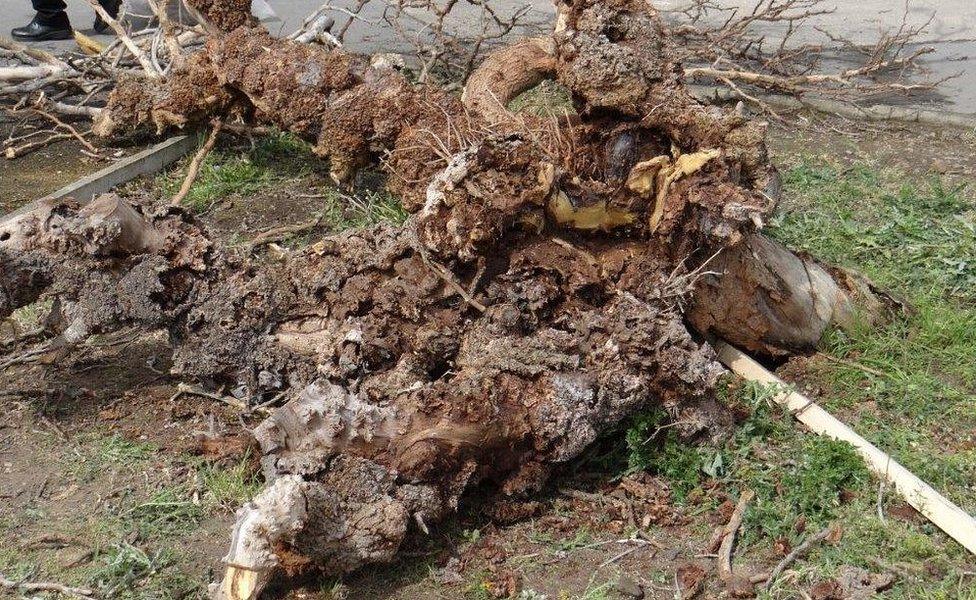
The mulberry tree had stood for hundreds of years but died in 2017 due to beetle infestation and canker
"The tree is in a really poor state, it's rotten the whole way through, and we just thought it was fitting to replace it with a cutting from the original tree so we can keep the mulberry alive at Wakefield prison," he said.
"It's on the main route that prisoners take each day to go to work in workshops, so four times a day most prisoners walk past it and they'll notice it's not here any more."
- Published15 January 2018
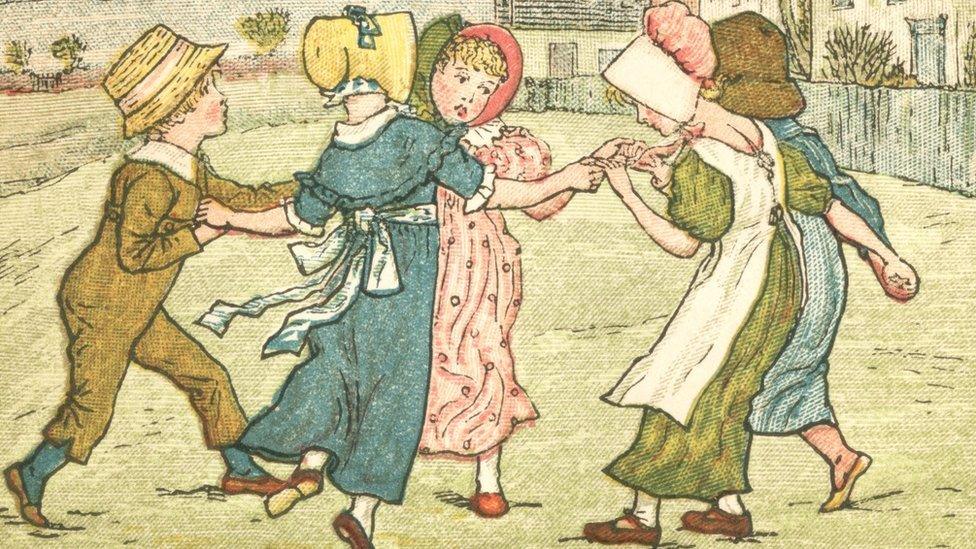
- Published19 September 2016
